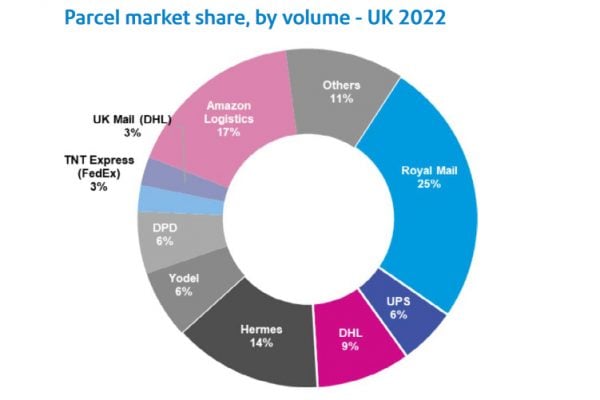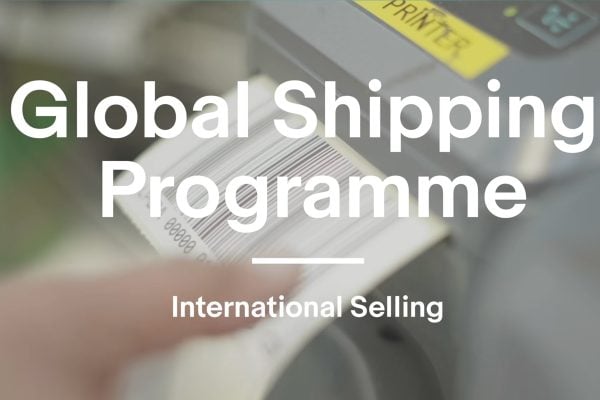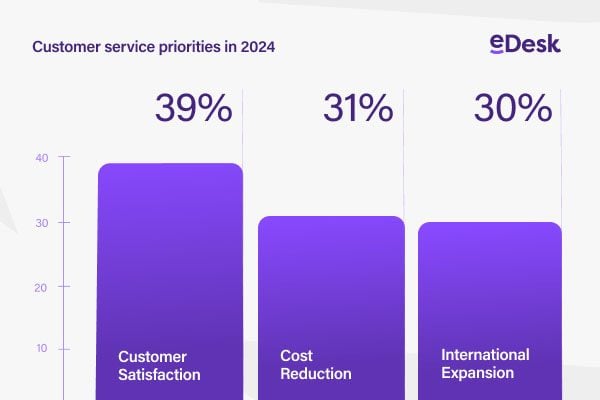Following the release of the latest Pitney Bowes BOXpoll survey data, Georges Berzgal, Senior Vice President International – Pitney Bowes Global Ecommerce discusses how the strong dollar presents a fiscal advantage for UK retailers to exploit selling channels to US consumers:
The strong dollar presents a great opportunity to UK retailers. Here’s what you need to know
The pound recently hitting a two-year low against the dollar is set to boost cross-border purchases, as overseas buyers look to make the most of the favourable exchange rate. By 2025, one in every five ecommerce transactions is likely to be cross-border, purchased outside the buyer’s domestic market. Global online cross-border sales are expected to reach $1.6 trillion over the next four years, according to Pitney Bowes market research. For UK retailers rebuilding their revenue after a tumultuous few years, selling overseas offers hope and opportunity.
One market in particular could be paved with gold for UK brands. US retail ecommerce sales are expected to grow 16% this year, reaching more than $1 trillion.
The opportunity
The good news for UK retailers is that these shoppers – particularly younger consumers – are making the most of the strong dollar and shopping online outside their own country. A recent Pitney Bowes BOXpoll survey of 1,254 US cross-border online shoppers finds one in four (25%) Generation Z consumers and more than one in five (22%) millennials buys from UK online retailers at least once a month . The opportunity continues to grow: 37% of US Generation Z buyers, and 30% of millennials say they are buying products online from another country more often than they were last year.
Spending power of younger consumers
The US Bureau of Labor Statistics reveals there are 7.3 million full-time Generation Z workers in the US. These consumers -born between 1997 and 2012 – generate a combined total of $360 billion a year in disposable income, according to a GenZ Planet study published by Bloomberg. This figure is generated by full-time and part-time employment, side hustles, and contributions from parents.
Millennials born between 1981 and 1996 comprise around 22% of the US population. More than 90% are employed – 19% hold a managerial role – and they are expected to generate around 30% of US consumer retail spend. US millennials’ spending power is said to reach around $2.5 trillion. For British retailers managing the impact of workforce shortages, rising inflation and soaring costs, these US online shoppers could represent the silver lining they have been hoping for.
Search, marketplaces and TikTok
Reaching this lucrative market requires strategies built on data, not guesswork or assumptions. “Generation Z? They’re all on TikTok,” is a statement I frequently hear. 60% of the Generation Z population has TikTok, so this isn’t too far from the truth, but actually knowing where buyers find UK brands gives retailers a head start. Through our BOXpoll surveys, we questioned 400 US-based online shoppers who had bought from British brands in the past six months to find out exactly how they discovered these brands. The results revealed valuable insight: while they do find brands on TikTok, search and marketplaces remain popular.
Search is the most commonly stated channel for Generation Z US consumers to discover UK brands, cited by 29%, followed closely by TikTok advertising (27%). 21% say they find brands through YouTube advertising, and the same percentage discover UK through personal recommendations. One in five (20%) US Generation Z shoppers is introduced to UK brands through online marketplaces. 16% find brands through TikTok influencers and the same percentage through YouTube and Facebook advertising.
Millennials also say they are most likely to find UK brands through search, with 30% of US millennials surveyed finding UK brands this way. 29% discover UK retailers through marketplaces and one in four (25%) is influenced by Facebook advertising. 21% cite YouTube advertising, and 19% find UK brands through Instagram influencers or TikTok advertising. 18% say their purchases are generated by TikTok influencers or Instagram advertising.
The shipping experience is make-or-break
34% of US shoppers buying from UK sites frequently abandon their shopping cart at checkout because they feel shipping costs are too high, and 29% do so because shipping takes too long. Almost one in four (24%) do so because they don’t want to pay the costs associated with returns. Returns are complex for all retailers – in fact, US retailers report that returns cost them an average of 21% of order value – but for UK retailers shipping to the US, this complexity is amplified with taxes, tariffs and surcharges. Millennials report returning an average of 4.1 online purchases in the past month, and Generation Z say they return 2.9 items they have bought online from the US. UK brands entering the US market must get the returns process right.
Key takeaways
Younger US shoppers are presenting UK retailers with an opportunity to drive new revenue streams. Demand is there, and the strong dollar makes buying from British brands even more attractive. But UK retailers must listen and respond to barriers associated with buying. They need to:
- Meet buyers where they are and understand the platforms they use and how they use them. It’s not enough to assume Generation Z buyers are on TikTok. How are they using the app, and what’s driving them to act?
- Offer transparent, fully landed shipping costs. VAT, tariffs and duties are complex for both buyers and sellers.
- Offer tracking and get delivery right. 92% of US consumers we spoke to through a recent BOXpoll survey expect clear information about delivery charges before they make a purchase. Our BOXpoll surveys found that an accurate estimated delivery date was more important to consumers than fast shipping. Our research also found that buyers love tracking: 96% of online shoppers use a tracking service if offered. 78% expect real-time tracking, and 43% of customers track their items more now than before the pandemic.
- Work with logistics partners to provide this intelligence and simplify cross-border returns. If sellers can eliminate the hassle and complexity and offer easy, efficient cross-border returns, buyers will repay them with loyalty.
Overcoming these barriers does not need to be complex or costly. The right ecommerce and logistics partners can provide robust infrastructure and technology capabilities, cost-effective delivery and returns services, as well as parcel protection and package tracking. Choose a partner that will adapt and support you as your business grows to enable you to build a firm foundation for cross-border success.










One Response
Facebook, but not Instagram plays a role in discovering brands. I’m surprised.